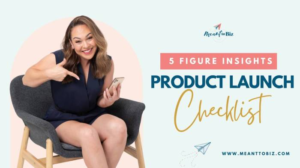
Podcast cover art design tips are essential for podcasters looking to make a memorable first impression. Visual branding plays a crucial role in attracting potential listeners and setting the tone for the content within. In this discussion, we’ll dive into the core elements of effective cover art, explore the significance of color theory, and highlight the tools and techniques that can help you create eye-catching designs.
From understanding the must-have components of cover art to selecting the right design software, this guide aims to equip you with the knowledge needed to elevate your podcast’s visual identity. By mastering these design tips, you’ll be better positioned to stand out in a crowded podcasting landscape and engage your audience effectively.
Essentials of Podcast Cover Art Design
Creating effective podcast cover art is essential for standing out in a crowded digital landscape. A captivating visual identity not only attracts potential listeners but also communicates the essence of your podcast’s content. Given that podcast listeners often browse through numerous options in various directories, great cover art serves as the first impression and can significantly influence their decision to subscribe.An effective podcast cover art should incorporate several key elements that capture your brand’s essence and appeal to your target audience.
This art should be clear, visually engaging, and representative of the podcast’s tone and subject matter. It’s not just about looking good; it’s about strategically communicating your show’s identity.
Importance of Visual Branding in Podcasting
Visual branding in podcasting is crucial as it establishes recognition and trust among listeners. It encapsulates your show’s personality and content, creating a cohesive identity that listeners can relate to. Consistent branding across all platforms helps in building a loyal audience base. Key aspects of visual branding include:
- Logo: A distinct logo can enhance brand recognition and should be incorporated into the cover art.
- Typography: The choice of fonts plays a significant role in conveying the podcast’s tone—playful, serious, or informative.
- Imagery: Use relevant images or illustrations that reflect the podcast’s theme or subject matter, ensuring they resonate with your audience.
Key Elements of Effective Cover Art
To create compelling cover art, several crucial elements must be included to ensure it is memorable and functional. The goal is to communicate your podcast’s theme while being visually attractive. The essential components include:
- Title: The podcast’s name should be prominently displayed, easy to read, and able to stand out even in smaller views.
- Tagline: A concise tagline can provide additional context about the podcast’s content, enhancing clarity for potential listeners.
- Style Consistency: The overall design should remain consistent with your branding across all platforms, including your website and social media to create a unified image.
Role of Color Theory in Attracting Listeners
Color theory plays a vital role in attracting potential listeners and influencing their emotions and perceptions about your podcast. Different colors evoke different feelings, which can enhance the overall appeal of your cover art. Understanding the psychological impact of colors can help you select a palette that resonates with your target audience:
- Red: Often associated with excitement and energy; it can draw attention quickly.
- Blue: Conveys trust and professionalism, making it a popular choice for corporate or educational podcasts.
- Yellow: Represents optimism and cheerfulness, perfect for light-hearted or entertaining content.
- Green: Associated with nature and tranquility, ideal for wellness or lifestyle podcasts.
Tools and Techniques for Designing Podcast Cover Art

Designing eye-catching podcast cover art requires the right tools and techniques to effectively convey the essence of your podcast. A well-crafted design not only attracts listeners but also helps in brand recognition. Here, we delve into various software options, methods for leveraging templates, and best practices for typography in podcast cover art.
Popular Design Software and Platforms
There are several design software and platforms that are widely used for creating stunning podcast cover art. Each offers unique features catering to different design needs and skill levels. Here are a few notable ones:
- Adobe Illustrator: A professional vector graphics editor known for its precision and versatility. Ideal for custom illustrations and advanced designs.
- Canva: An accessible online design platform that offers a wide range of templates specifically tailored for podcast cover art, making it great for beginners.
- Affinity Designer: A cost-effective alternative to Adobe, providing robust design tools for creating detailed artwork.
- GIMP: A free and open-source raster graphics editor that allows for comprehensive image manipulation and editing.
- Snappa: A user-friendly platform that simplifies graphic design with pre-made templates and an intuitive interface, perfect for non-designers.
Utilizing Templates and Existing Frameworks
Templates are invaluable in streamlining the design process and ensuring your cover art meets the required specifications. Utilizing existing frameworks can save time and provide a polished look. Here are effective methods to incorporate templates:
- Template Customization: Start with a template that resonates with your podcast theme. Customize colors, fonts, and images to align with your brand identity.
- Size and Format Adherence: Ensure the template is set to the recommended dimensions for podcast platforms (usually 3000 x 3000 pixels) and maintains a suitable file format (JPEG or PNG).
- Integration of Personal Branding: Use templates that allow for easy incorporation of your logo and brand colors, reinforcing your podcast’s identity across platforms.
Best Practices for Using Typography in Cover Art
Typography plays a crucial role in making podcast cover art both readable and visually appealing. The careful selection of fonts can enhance your podcast’s message. Here are best practices to consider:
- Font Selection: Choose fonts that reflect the tone of your podcast. For example, a casual podcast might benefit from a playful font, while a professional podcast may require a sleek, clean typeface.
- Hierarchy and Size: Establish a clear hierarchy by varying font sizes and weights. The podcast title should be more prominent than the subtitle to guide the viewer’s attention.
- Contrast and Readability: Ensure there is sufficient contrast between the text and background. Light text on a dark background or vice versa maximizes readability.
- Limited Font Use: Stick to two or three fonts to maintain visual coherence. Too many different fonts can create a cluttered and unprofessional look.
“A well-chosen typeface can convey the essence of your podcast’s personality in an instant.”
Strategies for Promoting Your Podcast Cover Art

Creating eye-catching podcast cover art is just the first step; promoting it effectively is equally important. To maximize visibility and attract potential listeners, utilizing a range of channels is essential. This section will cover various strategies for showcasing your podcast cover art, emphasizing the importance of link popularity and audience building through social media and email lists.
Channels for Showcasing Cover Art
Choosing the right channels to showcase your podcast cover art significantly influences its reach and effectiveness. Here are some of the most impactful channels to consider:
- Social Media Platforms: Use popular platforms like Instagram, Facebook, and Twitter to display your cover art. These visual-centric platforms allow you to connect with potential listeners through engaging visuals and hashtags.
- Podcast Directories: Ensure your podcast cover art is prominently displayed in listings on directories like Apple Podcasts, Spotify, and Google Podcasts. The cover art serves as the first impression for many potential listeners.
- Blogs and Websites: Collaborate with bloggers or websites in your niche to feature your podcast cover art. This can extend your reach to their audience, improving visibility.
- Email Newsletters: Incorporate your podcast cover art into your email marketing campaigns. This helps to maintain a cohesive brand image and keeps your existing audience informed and engaged.
Significance of Link Popularity
Link popularity plays a crucial role in driving traffic to your podcast, directly influencing the visibility of your cover art. The more links pointing to your podcast from reputable sites, the higher the chances of attracting new listeners.
“Quality backlinks enhance your podcast’s credibility and improve search engine rankings, making it easier for potential listeners to find you.”
To improve link popularity, consider these tactics:
- Engage with influencers in your niche to feature your podcast, creating backlinks to your site.
- Write guest posts on relevant blogs, including links to your podcast.
- Participate in podcast directories that promote your show and offer link-sharing opportunities.
Building an Audience through Social Media and Email Lists
Social media and email lists are powerful tools for establishing and growing your audience. They not only help promote your cover art but also engage potential listeners. Social media platforms facilitate direct interaction with your audience, enabling you to share insights, behind-the-scenes content, and updates about upcoming episodes. Here are some strategies for effective audience building:
- Create Engaging Content: Post regularly, showcasing your podcast cover art along with interesting captions or stories that resonate with your audience.
- Utilize Hashtags: Research and use relevant hashtags to increase the discoverability of your posts, linking your cover art to trending topics in your niche.
- Host Contests or Giveaways: Encourage your audience to share your cover art in exchange for a chance to win a prize, creating buzz around your podcast.
Building an email list is equally essential for maintaining a connection with your audience. Consider the following approaches:
- Offer Exclusive Content: Provide subscribers with early access to episodes or bonus content, encouraging them to share your cover art and podcast with their networks.
- Send Regular Updates: Keep your audience informed about new episodes, special events, or changes to your podcast, including updates about your cover art.
- Encourage Feedback: Create a sense of community by inviting listeners to share their thoughts on your cover art via email, fostering engagement and loyalty.
Epilogue
In summary, embracing these podcast cover art design tips can transform your podcast’s visual appeal and help you connect with your target audience. As you apply these insights into your design process, remember that a well-crafted cover can not only attract listeners but also reinforce your brand identity. Keep experimenting and refining your approach, and watch your podcast flourish in both reach and engagement.
Detailed FAQs
What are the key elements of podcast cover art?
The key elements include a clear title, engaging imagery, appropriate color schemes, and a consistent style that reflects the podcast’s brand.
How important is color theory in podcast cover art?
What tools can I use to design my podcast cover art?
Popular tools include Canva, Adobe Spark, and Photoshop, which offer templates and customization options to make design easier.
How can I promote my podcast cover art?
Promote your cover art through social media, your podcast website, and email newsletters to enhance visibility and attract more listeners.
Should I use templates for my podcast cover art?
Using templates can save time and provide a professional look, but ensure you customize them to reflect your unique brand identity.





